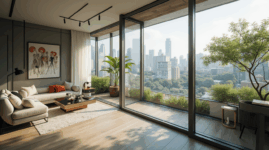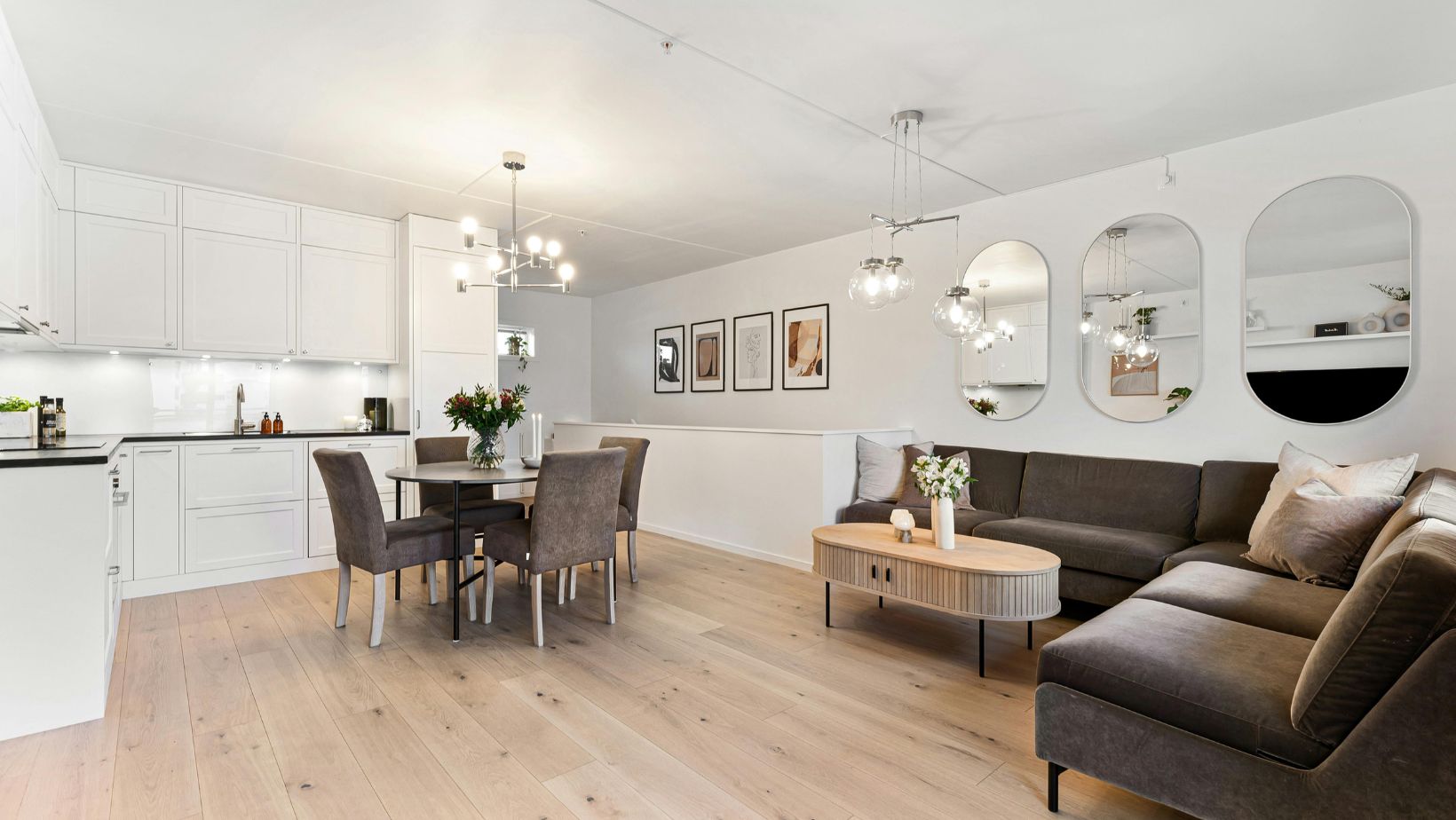
Functional Design Elements That Transform Your Living Space

Modern interior design isn’t just about aesthetics—it’s about how your home works for you. In today’s homes, especially smaller urban spaces, every item needs to earn its place. Function and style are no longer separate goals. They’re the same.
From integrated storage to modular furniture, the most effective design elements are those that solve problems while also looking good. One of the most overlooked but critical aspects? Sound. Acoustic comfort is just as important as visual flow, especially in open floor plans. That’s where smart design choices like acoustic dampening panels quietly do their part—both literally and stylistically.
Let’s explore how you can build a home that not only looks sharp but also performs on every level.
The Rise of Multi-Purpose Design in Modern Homes
Today’s homes have to do more than ever. A living room isn’t just for lounging—it might function as a remote office by day, a workout zone in the evening, and a movie theater at night. Kids do schoolwork at the dining table. Bedrooms double as creative studios. Our spaces are designed to adapt to changing needs without compromising comfort or style.
This shift has pushed designers and homeowners to reconsider how every square foot is used. The new standard? Design solutions that are smart, space-savvy, and multifunctional.
Furniture now comes with hidden features—storage ottomans, expandable dining tables, and sofas with built-in charging ports. Walls are no longer blank slates; they host fold-out desks, mounted organizers, or even Murphy beds. Every element is being asked, “What else can you do?”
The result is a new kind of home: one that adapts, transforms, and supports your lifestyle on demand. It’s not just about squeezing more into small spaces—it’s about designing with purpose. A multifunctional home doesn’t feel crowded. It feels capable.
Storage Solutions That Double as Style Statements
Clutter kills comfort. But when storage becomes part of your design, the organization becomes an opportunity for expression.
Built-in Shelving Systems
Built-ins are one of the most seamless ways to add function to a space. Whether you flank a fireplace with floor-to-ceiling shelves or install recessed units in tight hallways, built-ins keep your belongings organized without taking up floor space.
Paint them to match your walls for a minimalist look or contrast for a visual punch. Either way, they add structure without bulk.
Ottoman Storage and Seating Combinations
An ottoman that hides blankets, toys, or books is a design win. It adds texture and softness to a room, offers extra seating, and serves as a coffee table in a pinch. Choose upholstered options in textured fabrics to bring warmth—and function—to your layout.
These pieces work especially well in smaller spaces where every square foot counts.
Wall-Mounted Organizers as Art Pieces
Functional wall organizers don’t have to look utilitarian. Pegboards, magnetic boards, and wood-slatted systems can double as design elements. Try geometric layouts or color-coordinated setups that fit your aesthetic.
In kitchens, entryways, or home offices, wall-mounted organization keeps essentials within reach while turning a blank wall into a feature.
Creating Acoustic Comfort Through Design
A quiet home is a peaceful home. But sound often gets ignored until it becomes a problem. Echoes in open-concept living rooms, noisy neighbors, and thin walls can all chip away at comfort.
Sound Management in Open Living Spaces
Open floor plans are great for flow, but they can be a challenge acoustically. Without walls to break up sound waves, noise travels fast and lingers. Area rugs, curtains, and upholstered furniture help absorb sound, but for real control, you need intentional design choices.
Add soft materials, vary your surface textures, and avoid too many hard, reflective finishes. Even strategic plant placement can help.
Decorative Elements That Reduce Noise
You don’t need to sacrifice style for sound quality. Think fabric wall hangings, textured tapestries, and felt art panels. Even woven baskets on the wall or clustered soft decorative elements can help dampen unwanted echoes.
And yes—those trendy acoustic dampening panels you’ve seen online? They come in beautiful designs now. Geometric shapes, bold colors, and even custom prints. They add character and calm all at once.
Choosing Materials for Better Acoustics
Certain materials naturally absorb sound better than others. Think wool, cork, velvet, and dense foam. Upholstered headboards, thick drapery, and fabric-covered wall panels all improve acoustics while blending into your space.
When selecting flooring, consider rugs with thick padding or cork tiles, which provide a soft feel underfoot and reduce footfall noise. It’s all about layering textures with intention.
Lighting Elements That Serve Multiple Functions
Lighting does more than illuminate a room. It shapes your mood, supports your lifestyle, and highlights design features. The best lighting plans are layered, adaptable, and designed with purpose.
Task Lighting That Enhances Ambiance
Task lighting isn’t just for seeing clearly—it’s part of the atmosphere. Under-cabinet lights in the kitchen, reading lamps near a cozy chair, or adjustable sconces by the bed all combine practicality with style.
Choose fixtures with dimming options to shift from focused work to relaxed evenings. Metal finishes or sculptural shapes can double as visual accents.
Natural Light Optimization Techniques
Design starts with daylight. Letting in more sun doesn’t mean gutting your walls—small changes make a big difference. Use sheer curtains instead of heavy drapes. Place mirrors on opposite windows to bounce light deeper into the room.
Furniture placement also matters. Avoid blocking windows with bulky pieces. Let the light flow, and your space will feel larger and more alive.
Smart Lighting Systems for Modern Living
Smart bulbs and lighting systems allow you to change color temperature, brightness, and schedules—all from your phone or voice assistant. You can go from morning energizing cool tones to warm, cozy evenings with a tap.
Some systems even learn your habits and adjust lighting automatically. It’s one of the easiest ways to make your space feel both modern and personalized.
Space Dividers That Define Without Confining
Open layouts are popular for a reason—but sometimes, you need structure without sacrificing airiness. That’s where smart space dividers come in.
Room Dividers as Focal Points
A divider doesn’t have to be an afterthought. Screens, shelving units, or slatted wood panels can double as visual anchors in a room. Use them to guide the flow, define a function, or add texture.
For example, an open bookshelf between your dining and living areas provides separation while still letting light through. Add decor or plants to make it feel intentional.
Flexible Partition Solutions
Sliding doors, folding screens, or curtain panels let you switch between open and closed layouts as needed. Need focus during a Zoom call? Close the curtain. Hosting friends later? Slide it open.
This kind of flexibility is key in multi-purpose spaces. Look for lightweight materials and neutral tones that blend with your overall aesthetic.
Creating Privacy in Open Floor Plans
Sometimes, you just need a corner that feels like yours. Create semi-private zones with corner desks, tall plants, or a high-backed sofa that shields a reading nook.
 Use rugs and ceiling lights to visually define zones without physical walls. This subtle separation keeps your space open while making each area feel intentional and comfortable.
Use rugs and ceiling lights to visually define zones without physical walls. This subtle separation keeps your space open while making each area feel intentional and comfortable.
Furniture Pieces That Work Harder for You
Today’s furniture has to multitask. It’s not enough for a piece to just exist—it needs to earn its spot with added function or flexibility.
Convertible and Modular Furniture
Sofas that turn into guest beds. Desks that fold into the wall. Modular seating that adapts to your needs. These pieces offer maximum value, especially in compact homes or apartments.
You can rearrange layouts depending on the season, your mood, or the number of guests. That kind of freedom is part of what makes modern design so livable.
Hidden Storage in Everyday Items
A bench by the window? It should open up to store blankets. A coffee table? Go for one with hidden compartments. Even side tables now come with drawers or lift-tops.
It’s about thinking ahead. What else can this do for me? That mindset turns simple furniture into storage solutions you didn’t even know you needed.
Dual-Purpose Seating Options
Dining chairs that double as accent pieces. Poufs that work as extra seating or footrests. Stools that tuck under tables but pull out when guests arrive. Look for clean designs and durable materials so they work in any room.
Functionality doesn’t mean sacrificing beauty—it means designing with real life in mind.
Design That Works Hard and Looks Good
Function and beauty don’t have to compete. The best interior design today is smart, flexible, and intentional. Whether you’re carving out a workspace in your living room, reducing noise with thoughtful materials, or investing in a storage piece that looks like art—every design decision should make your space not just prettier but better.
Think beyond decoration. Look for elements that serve multiple purposes, solve real problems, and elevate how your home feels day to day. With the right mix of form and function, you can create a living space that supports your lifestyle, adapts as your needs change, and feels like a place you never want to leave.
In the end, good design isn’t just about how it looks—it’s about how it lives.




